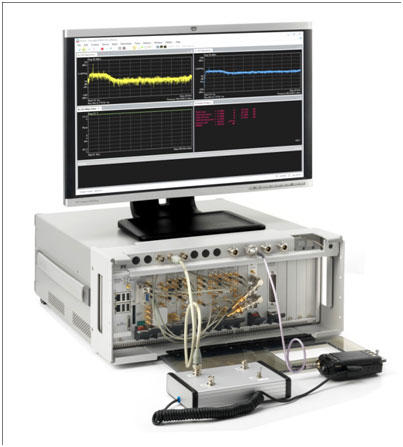Darlene Carpenter, Keysight Technologies
 Design and test of new tactical and public safety radios is a greater challenge for engineers than ever. Modern advances in these technologies require support of well-established analog modulation, emerging digital standards, commercial wireless and connectivity standards including LTE and WiFi. This means that the radio test system must be able to test a wide range of requirements. The list includes various frequency ranges, wider bandwidths, new modulation schemes,legacy formats and general purpose measurements.
Design and test of new tactical and public safety radios is a greater challenge for engineers than ever. Modern advances in these technologies require support of well-established analog modulation, emerging digital standards, commercial wireless and connectivity standards including LTE and WiFi. This means that the radio test system must be able to test a wide range of requirements. The list includes various frequency ranges, wider bandwidths, new modulation schemes,legacy formats and general purpose measurements.
This article discusses what is needed to develop an open, flexible hardware and software test solution to test today’s radio technologies which can be adapted for future expansion as radio designs evolve.
There are several types of radios, and each has unique capabilities, making it evident that a single test configuration is not able provide a solution for all radio tests. Here are some examples of features that create additional test challenges during radio test system development:
- Tactical radios often secure communications using encryption and many MILCOM radios incorporate internal test modes to verify and manage encryption. Tactical radio test systems need the ability to test specialized algorithms used for military counter-counter measures, and could be customized for support of various MILCOM radio formats.
- Land mobile radio (LMR) includes walkie-talkies and two way radios in vehicles that must test higher bandwidth in many different frequency bands such as VHF, UHF, 700 MHz band, 800 MHz band for public safety radios and 4.9 GHz band which also allocates broadband applications (W-LAN, WiFi hot spots, etc.)
- Software Defined Radio (SDR) is a new technology designed, mainly in software, to receive and transmit in multiple radio formats, bandwidths and frequency ranges which create many scenarios that must be tested.
Engineers’ decisions on how a radio test system is developed depends on multiple factors such as performance, ease of use, flexibility, scalability, size, use model, and whether the test system will be used interactively or automated. Engineers may consider a one box tester which has the advantage of more integrated functions since the system is designed for the functions to work together. This tight integration supports error correction and provides moderate measurement speeds. Another consideration is a rack and stack or hybrid system that includes a mix of form factors and provides a flexible choice of instrument sources, measurements, levels of accuracy and speed.Modular systems, such as the PXI, have the most flexibility of rack and stack/hybrid systems and provide performance advantages, such as wider frequency range, better DANL, phase noise, dynamic range and higher data transfer rates, compared to one box testers.Different radio devices and different stages of test are more easily addressed by a system that is capable of flexible performance margins.
A PXI modular configuration is an optimal, long term, test solution providing a flexible combination of hardware and software, and can easily integrate new modules to meet future test needs.PXI modules support key radio test capabilities such as RF and audio signal creation and analysis and switch modules for Push to Talk (PTT) control. Quality Tx and Rx radio measurements such as hum and noise, SINAD and THD, sensitivity and modulation quality.With the PXI platform, advanced capabilities such as phase noise or spurious emission can be supported with the addition of high frequency PXI instruments such as the M9393A PXIe vector signal analyzer – 50 GHz. The modularity and upgradability of PXI allows new capabilities to be added without changing the entire test system.
For more information about PXI radio test solution, visit
http://literature.cdn.keysight.com/litweb/pdf/5992-0696EN.pdf






